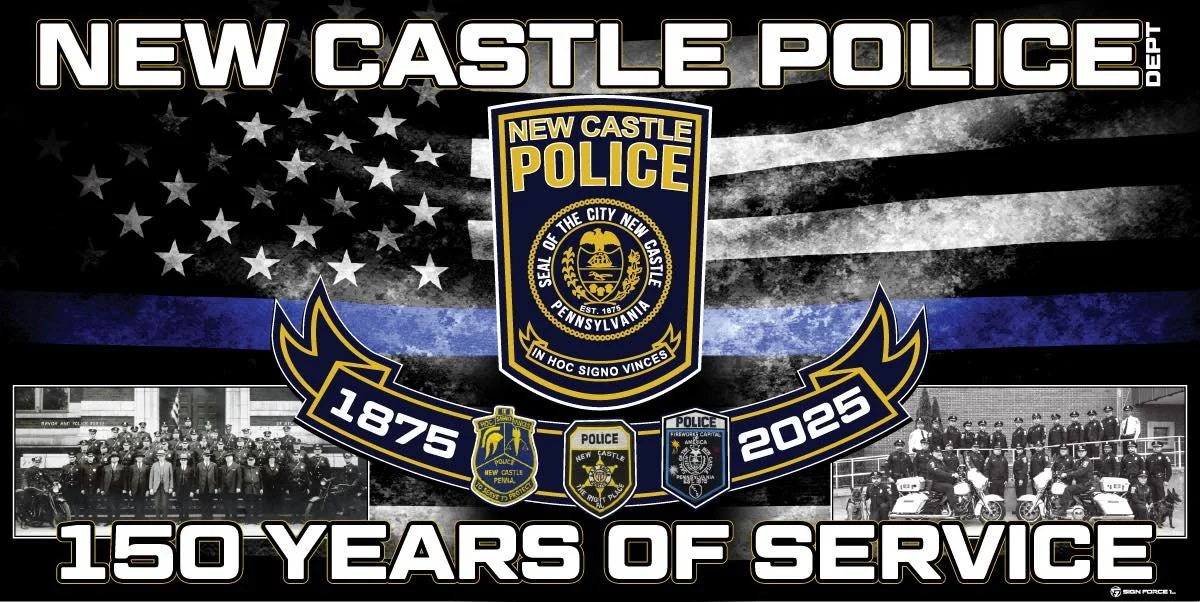Traffic Bureau
The New Castle Police Department’s Traffic Bureau is responsible for traffic related issues within the City of New Castle. This includes traffic studies, accident investigations and special events that require road closures and/or detours. The Traffic Bureau also coordinates proactive traffic law enforcement activities such as “Operation Buckle-Up” and “Aggressive Driving.” In addition, the traffic bureau also conducts traffic safety training programs for New Castle Area School District student drivers.
New Castle Police Department Auto Accident Checklist
You have just been in an accident. You are shaking and in shock. Take a couple of deep breathes so that you can deal with the incident. If you have a checklist handy, it will help you get through the next hour or so as you exchange information and figure out how to deal with the situation at hand. More than 12 million motor vehicle accidents annually include more than 20 million cars or trucks. A motor vehicle death occurs on average every 12 minutes and an injury every 11 seconds accord to the National Highway Traffic Safety Administration (NHTSA). If you are in a collision, are still alive, and without injury think of how lucky you are. Even if you are shaky after the accident, you will need to try and follow the steps of this checklist.
Stop the vehicle. If it is not safe to stop immediately, stop as soon as possible and try to do so out of the flow of traffic. Do not leave the scene completely, if you do the police might cite you with a violation.
Move the vehicle to the side or out of traveled roadway. Move the car if it is safe and legal to do so. In some states or jurisdictions, it is illegal to move a vehicle that was in a collision from its stopping point. This is so the police can investigate the incident better.
Get occupants out of harm’s way. Once the vehicle is parked and the ignition is turned off, move yourself and any passengers out of the car and away from the roadway or traffic.
Attend to any injuries. Check yourself and others for injuries. If you have a medical kit, use it but only for minor issues. If someone is seriously injured do not move them, unless necessary while you wait for emergency medical personnel to arrive.
Call police and emergency medical attention. 911 is usually the logical choice to call. If the accident is not that serious, 911 might give you the number of a local law enforcement agency to call.
Obtain witness statements. Ask anyone that witnessed the accident to write out a statement, sign it, include his or her name, and contact information. This is especially important if the witness is unable to stay until the police arrive.
Exchange information with the other driver. You and the other driver should exchange your name, telephone number, address, insurance company name, policy number and driver’s license numbers. Other information you might want to write down yourself are the car’s make, model, year and license plate number.
Take pictures and/or make a diagram of the accident scene. If you have a camera take pictures of the vehicles, whole accident scene, any stoplights, stop signs or intersections that played a part in the collision. You can also use a sheet of paper and draw a diagram of the area, including which way the vehicles were traveling and where occupants were seated in the vehicles. Note the date, time and weather conditions, along with any obstructions where the city or highway department may be responsible.
Cooperate with the law enforcement officer that responds. Answer any questions asked of you and give the information, such as insurance and driver’s license, as well as personal information the officer request. After the police have talked to everyone involved and any witness, write down the officer’s name, badge number and his or her station’s address and phone number. Ask about how you can get a copy of the police report.
Leave the accident scene and contact insurance company. Once the law enforcement officer says you can leave the scene, see if your car needs to be towed away or if you can drive it away. Once away from the scene call your insurance company and the other party’s insurance company if they are at-fault since you will likely be filing a claim with them.


